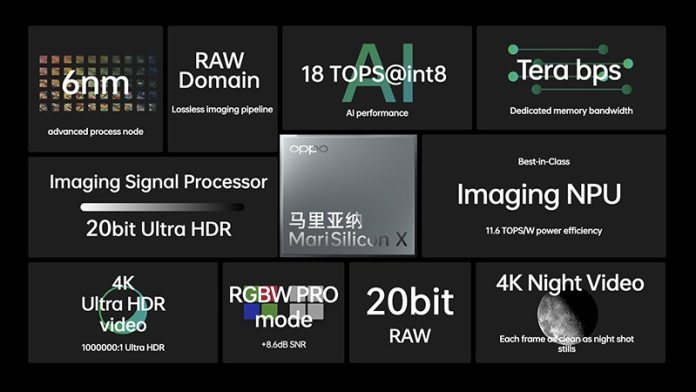Thermals and batteries hamper smartphones. They work best when specially designed hardware does the heavy lifting, like Oppo’s MariSiliconX ISP and the brand new MariSilicon Y Bluetooth chip. Of course, these are not the only options, but for optimal results, a custom chip is required. According to Ice Universe reports, Oppo headquarters plans to release its smartphone chip in 2024.
Oppo has claimed to have employed thousands of employees to participate in the project; however, more details are unavailable now. It’s likely to be an ARM-based device, meaning it will use Cortex CPUs and Mali GPUs that incorporate MariSilicon designs for things such as the ISP and parts of wireless connectivity.
The MariSilicon X ISP is made by TSMC’s foundries using 6nm.
I’ll be closely watching to determine which company Oppo selected as its partner in this project. Google chose Samsung because designing a chipset from scratch isn’t easy, even with ready-made parts. However, if the team at Oppo Mobile is truly that large, an open-source design isn’t possible.
In 2000, MediaTek launched the Dimensity 5G Open Resource Architecture and also opened its chipsets up to modifications by smartphone makers. However, I’ve yet to see anything as expansive as the Tensor chip.
A little over a year ago, I read about a rumour that Oppo is considering building an exclusive chipset built on TSMC’s 3nm. The report stated that the first smartphones with the new silicon would be available in 2023. However, the 3nm foundries of TSMC have had some delays that could have caused hiccups in the plans. The MariSilicon X chip is indeed fabbed in TSMC’s foundries with a 6nm process, which means the two companies have a relationship.
There’s a chance of a Cambrian growth of custom-designed chipsets. Even Samsung Electronics reportedly wants to create a custom chip independent of the Exynos chips made by its subsidiary business, Samsung System LSI. The plan doesn’t always work, however. Xiaomi tried it last year with its Surge S1, but that failed quickly.
